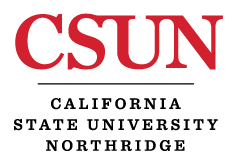Program: B.S., Kinesiology
Dance
Overview
The word kinesiology comes from the Greek word kinesis, which means to move. Kinesiology is the study of the art and science of human movement. The discipline of kinesiology is dedicated to the study of human movement and physical activity as it relates to sport, dance and exercise. This option is designed to provide a basis for dance experience and potential employment opportunities in the field of performance, choreography and teaching.
Program Requirements
A. Lower Division Prerequisite Courses (20 units)
1. Lower Division Science and Math Requirements (14 units)
Note: 8 of the 14 units double count in General Education and the major.
BIOL 101/L General Biology and Lab (3/1)
BIOL 211/212 Human Anatomy/Laboratory Studies in Human Anatomy (2/1)
BIOL 281 Human Physiology (3)
MATH 140 Introductory Statistics (4)
Note: Completion of BIOL 211 and BIOL 212 is prerequisite to enrollment in KIN 300. Completion of BIOL 281 is prerequisite to enrollment in KIN 346/L.
2. Lower Division Core (6 units)
KIN 200 Foundations of Kinesiology (3)
KIN 201/L Movement Forms—Sport, Dance and Exercise and Lab (2/1)
B. Upper Division Core (21 units)
KIN 300 Foundations and Analysis of Human Movement (3)
KIN 305 Historical and Philosophical Bases of Kinesiology (4)
KIN 306 Socio-Psychological Aspects of Physical Activity (3)
KIN 345/L Biomechanics and Lab (3/1)
KIN 346/L Physiology of Exercise and Lab (3/1)
KIN 377 Motor Learning and Control (3)
C. Dance Option Requirements (25 units)
Select 25 units with advisor’s approval. It is recommended that students take dance technique courses along with theoretical courses.
Theory Courses
KIN 314/L Creative Dance for Children and Lab (2/1)
KIN 315/L Analysis and Application of Multi-Cultural Dance Forms for Children and Adolescents and Lab (2/1)
KIN 316/L Choreographic Form and Lab (2/1)
KIN 317 Advanced Analysis of Dance Forms—Ballet, Jazz, Modern (3)
KIN 380/L Perspectives of Dance (2/1)
KIN 426 Choreography (3)
KIN 427 Dance Production (3)
KIN 494A-B Academic Internship in Kinesiology (1-2)
KIN 494I Academic Internship Evaluation (1)
KIN 498WA-C Dance Concert Modes (1-3)
KIN 499A-C Independent Study (1-3)
Technique Courses
KIN 318 Intermediate Classical and Contemporary Ballet (3-3)
KIN 319 Intermediate Modern Dance (3-3)
KIN 321 Intermediate Urban Contemporary Dance (3-3)
KIN 418 Advanced Classical and Contemporary Ballet (3-3)
KIN 419 Advanced Modern Dance (3-3)
KIN 421 Advanced Urban Contemporary Dance (3-3)
General Education (48 units)
Undergraduate students must complete 48 units of General Education as described in this Catalog.
When students select BIOL 101/L (3/1) that is required in the major to satisfy 4 units of GE: Natural Sciences and MATH 140 (4) that is required to satisfy 4 units of GE: Basic Skills-Mathematics, the GE total is reduced to 40 units. In selected options, there are additional “overlap” units for courses that count in meeting both major requirements and General Education requirements. Students should meet with a department advisor before selecting General Education courses. Failure to select overlapping courses may result in additional units in the major for selected options.
Total Units Required for the B.S. Degree: 120
Contact
Chair: Konstantinos Vrongistinos
Redwood Hall (RE) 250
(818) 677-3205
www.csun.edu/health-human-development/kinesiology
Student Learning Outcomes
The Department of Kinesiology is a learning-centered community that educates and inspires its students to understand and appreciate human movement for personal expression and wellness throughout the lifespan. In doing so, students and faculty work together to improve quality of life for themselves and their community. The department values and respects the spectrum of human diversity. An integrated approach to the teaching, learning and application of human movement provides opportunities and experiences to achieve the following learning outcomes:
- Apply an integrated kinesiological approach to encourage the adoption of healthy and physically active lifestyles, across diverse populations.
- Apply evidence-based practices to enhance the study of human movement.
- Demonstrate competent problem-solving strategies through intentional practices.
- Demonstrate knowledge of kinesthetic forms, processes and structures as they apply to the personal expression and culture of human movement.




